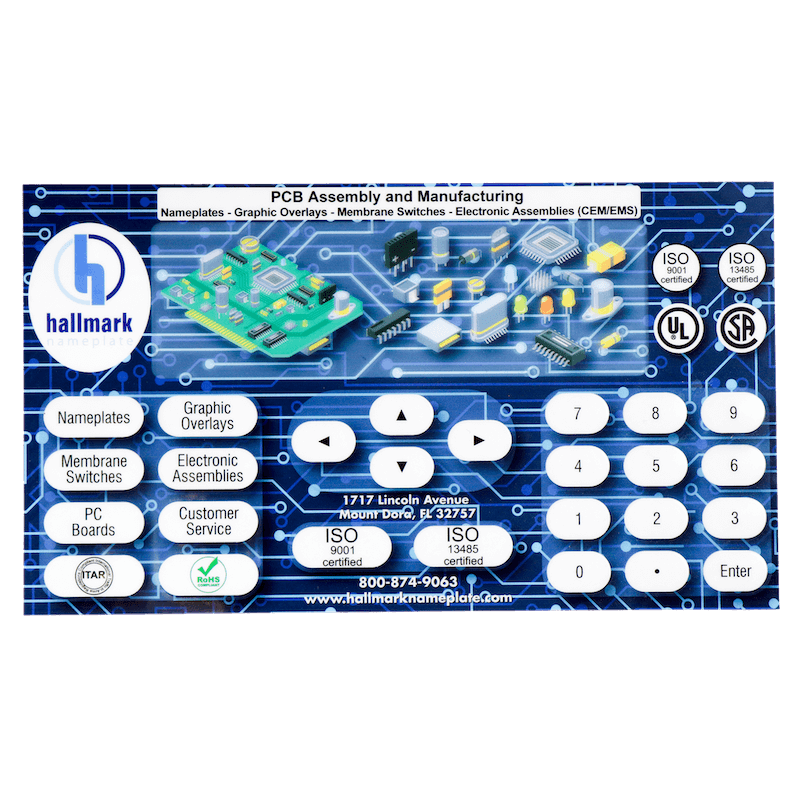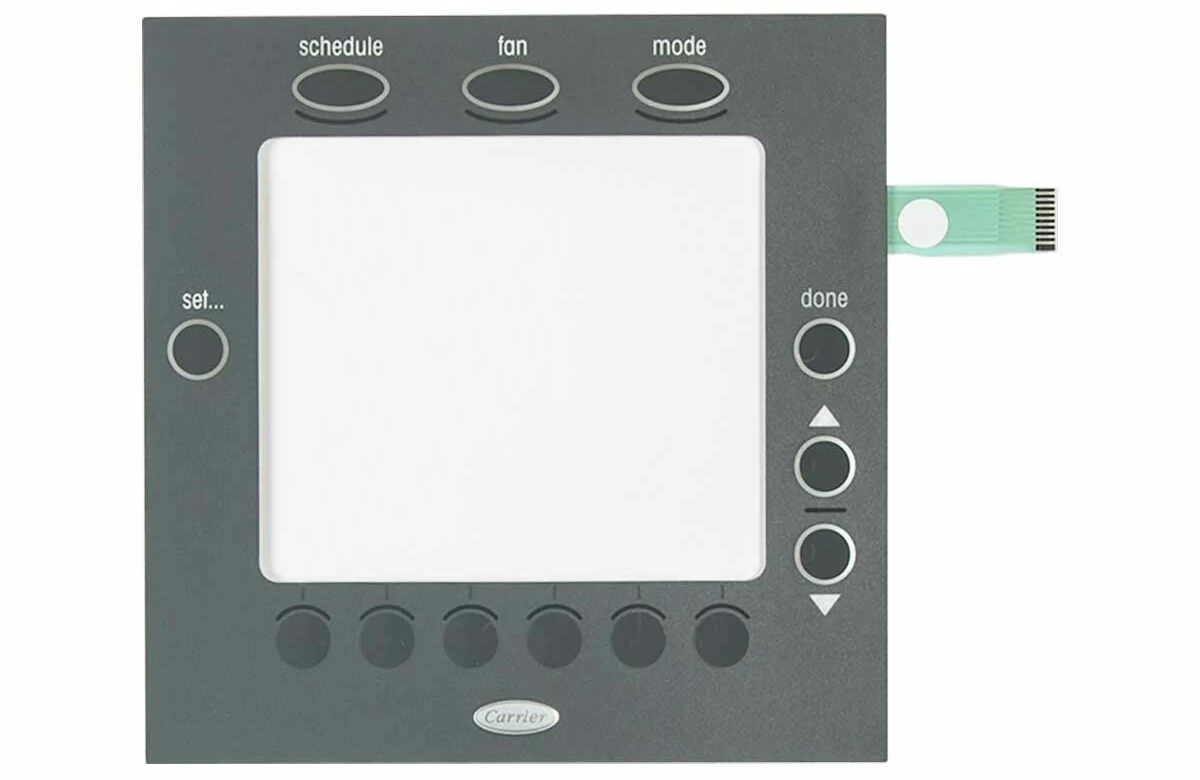Comprehending the Significance of Membrane Switches in Individual User Interfaces
Membrane switches are integral elements in the design of effective user interfaces, assisting in not just capability however likewise enhancing visual charm and individual communication. Their one-of-a-kind functions, such as resistance to ecological variables and personalized designs, make them appropriate for a varied array of applications across several industries. As we check out the numerous advantages and future trends connected with Membrane innovation, it ends up being clear that these buttons are more than simply components; they stand for a merging of technology and functionality. The implications of this innovation on individual experience deserve analyzing further.
What Are Membrane Switches?

The spacer layer, which has adhesive buildings, allows for the separation of the circuit layer from the overlay, guaranteeing that the switch remains in a non-activated state till pushed. When stress is used to the overlay, it compresses the spacer layer, bridging the space and finishing the circuit in the underlying layer. This design not only lowers the physical area needed for typical mechanical switches however likewise improves the durability of the tool, as Membrane buttons are typically immune to dirt, moisture, and various other ecological variables.
Generally located in applications varying from customer electronic devices to medical gadgets, Membrane buttons are essential to modern-day technology, supplying a reliable and user-friendly interface that straightens with modern design needs.
Benefits of Membrane Buttons
While various button modern technologies exist, Membrane Switches deal distinct advantages that make them particularly preferable in various applications. Among the main advantages of Membrane switches is their compact layout, which enables space-saving applications in gadgets where property is limited. Their thin profile not only enhances aesthetic charm yet likewise promotes lightweight construction.
Another significant benefit is their resistance to environmental factors. Membrane switches are normally secured versus moisture, dust, and impurities, making them optimal for use popular atmospheres, such as medical gadgets and industrial devices. This toughness prolongs the life expectancy of the switch, lowering upkeep prices and enhancing integrity.
Furthermore, Membrane buttons can be personalized to fulfill particular style requirements, including unique graphics and colors that improve customer communication. Their tactile feedback alternatives can additionally be customized to provide a gratifying user experience. Furthermore, Membrane buttons are affordable, especially in high-volume applications, as they can be produced efficiently.
Applications in Various Industries

In the customer electronic devices industry, Membrane switches are common in tools such as microwaves, washing makers, and remotes. Their responsive responses and visual alternatives enhance individual experience while supplying a streamlined, contemporary look. In addition, automobile manufacturers make use of Membrane switches in dashboard controls and infotainment systems, where room is restricted, and customer engagement is crucial.
In addition, the industrial sector leverages Membrane buttons in control panels for machinery and tools, permitting intuitive procedure in commonly rough atmospheres. Their resistance to chemicals and dampness guarantees durability and dependability in these applications. Overall, the versatility of Membrane Switches contributes substantially to their extensive usage, making them vital in various technological domains.
Design Factors To Consider for Membrane Switches

When developing Membrane switches, several their explanation crucial considerations have to be thought about to ensure optimal functionality and customer experience. First of all, the option of products is important; selecting sturdy, high-grade substratums can improve the switch's durability and resistance to ecological aspects such as dampness and temperature changes.
Secondly, the layout of the graphic overlay ought to prioritize quality and ease of usage. Symbols and message must be understandable, and the format should help with instinctive communication (membrane switches). Additionally, responsive feedback is essential; including a tactile dome or various other devices can boost the customer experience by supplying physical verification of activation
Another crucial variable is the switch's electric performance. Developers should ensure that the conductive traces are properly designed to reduce resistance and prevent signal interference. This entails evaluating the called for actuation pressure and making certain compatibility with the electronic elements they will certainly user interface with.

Future Trends in Membrane Modern Technology
As innovation view it now remains to development, Membrane switches are positioned to develop considerably, driven by innovations in products and making strategies. One arising fad is the consolidation of innovative materials, such as conductive inks and flexible substrates, which enhance longevity and lower the general Home Page weight of Membrane switches. These products not just improve the responsive reaction yet also permit the layout of buttons that can withstand harsher environmental conditions.
Moreover, the assimilation of touch-sensitive technologies is changing traditional Membrane Switches into more interactive user interfaces. Capacitive touch sensing units installed within Membrane button panels can give a much more responsive and intuitive user experience, straightening with the expanding need for smooth, modern designs in customer electronics.
Additionally, improvements in printing strategies, such as digital and 3D printing, make it possible for fast prototyping and customization of Membrane switches. This versatility permits producers to respond quicker to market demands and consumer choices.
Last but not least, sustainability is becoming a considerable focus, with manufacturers discovering environmentally friendly materials and processes. As these patterns unravel, the future of Membrane technology promises improved performance, aesthetic charm, and ecological obligation, strengthening their function in innovative customer interfaces throughout different sectors.
Verdict
To conclude, Membrane Switches represent an important part in the style of interface, incorporating performance with aesthetic versatility. Their benefits, including toughness and resistance to ecological elements, make them suitable for varied applications across different industries. Furthermore, thoughtful design factors to consider boost user communication and experience. As improvements in innovation continue, the development of Membrane switches is expected to more improve user interfaces, driving advancement and boosting usability in a progressively complicated technological landscape.
Membrane buttons are integral elements in the layout of reliable customer interfaces, assisting in not just functionality however additionally boosting aesthetic charm and individual communication.Membrane Switches serve as a crucial component in numerous user interfaces, helping with a smooth communication in between customers and electronic devices.While various button modern technologies exist, Membrane Switches deal distinctive advantages that make them particularly desirable in different applications.In addition, Membrane buttons can be tailored to fulfill specific design requirements, incorporating distinct graphics and colors that improve individual interaction.In final thought, Membrane Switches represent an important element in the style of individual interfaces, integrating performance with aesthetic flexibility.
Comments on “Membrane Switches vs. Traditional Switches: What You Need to Know”